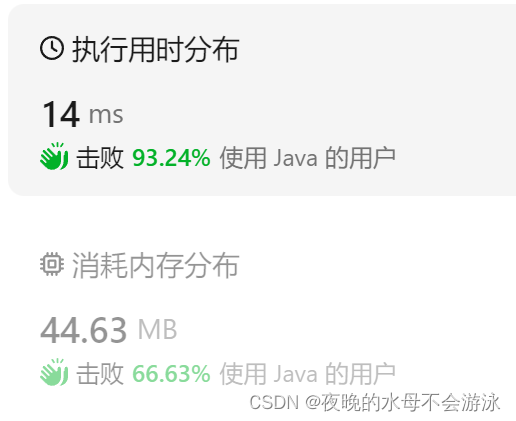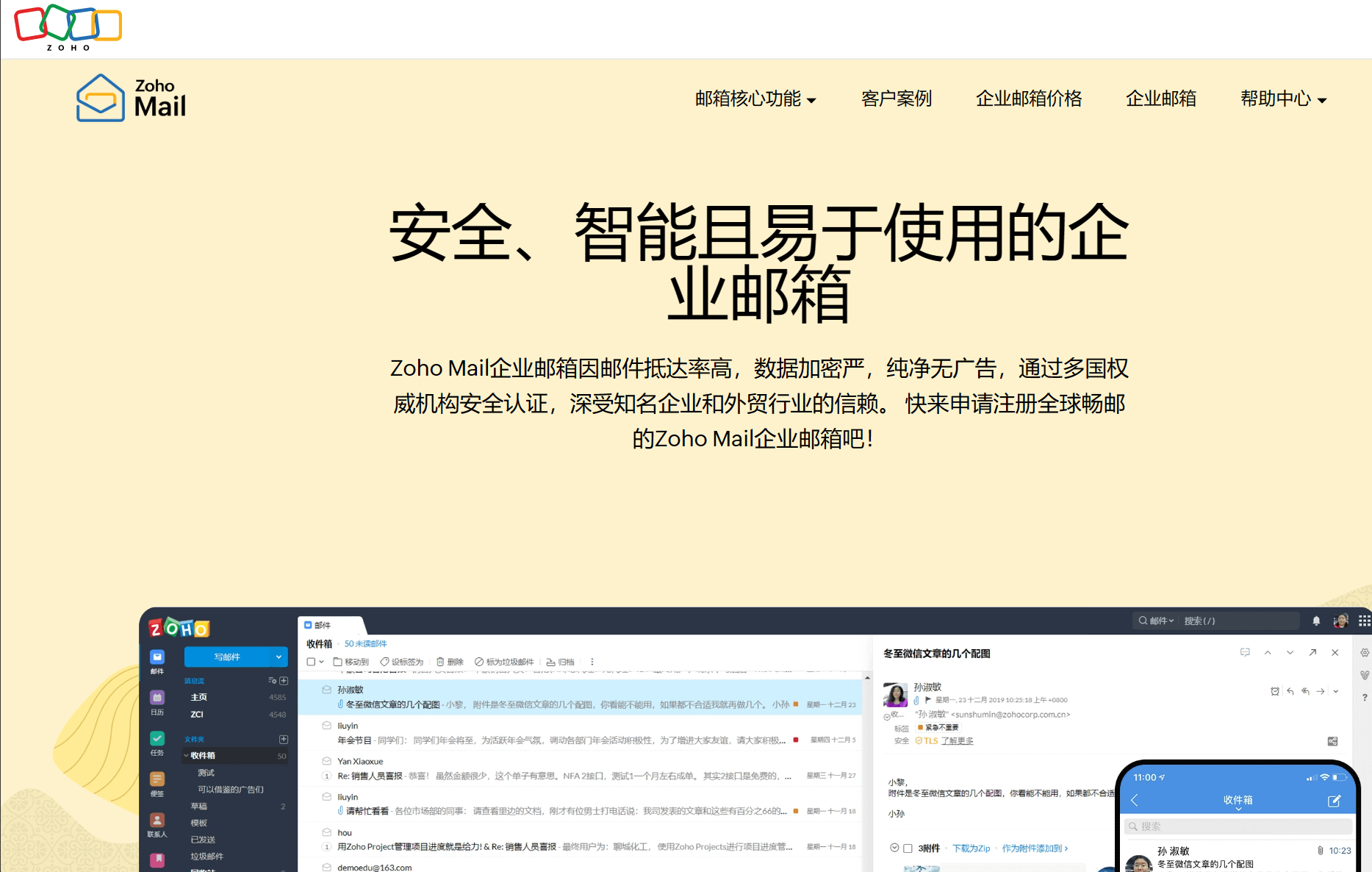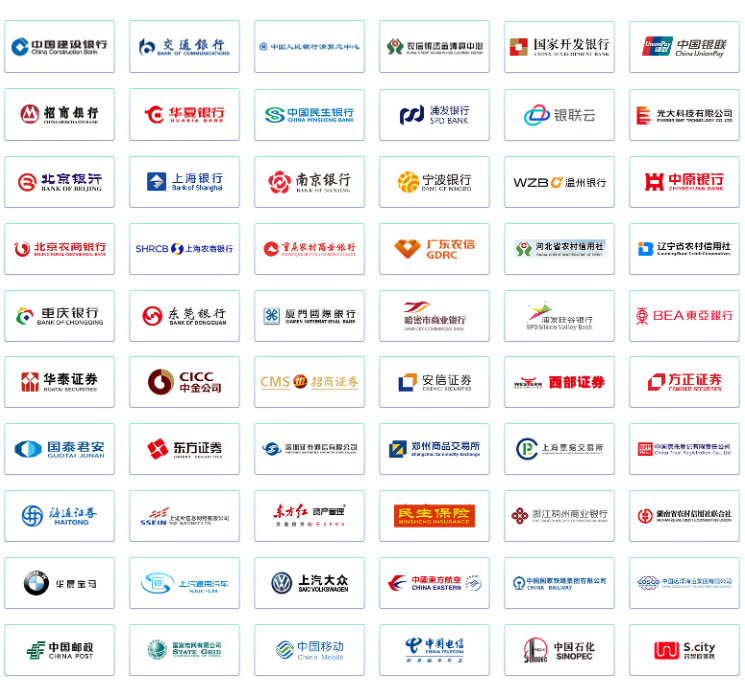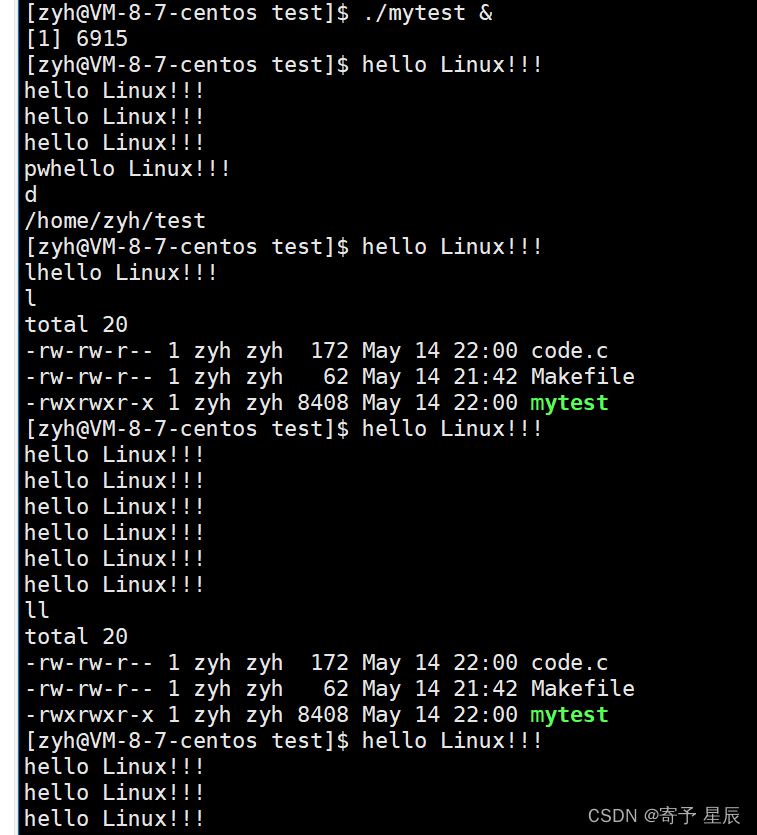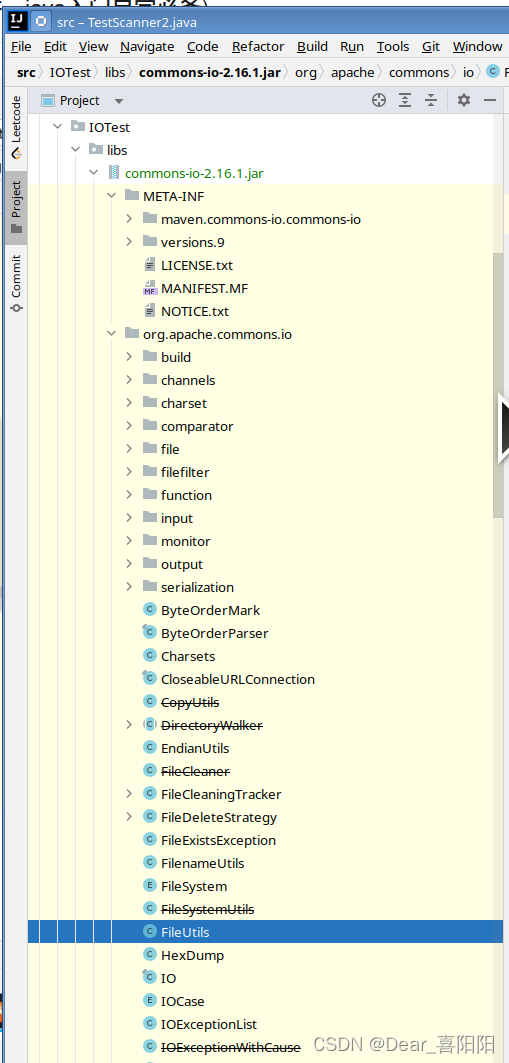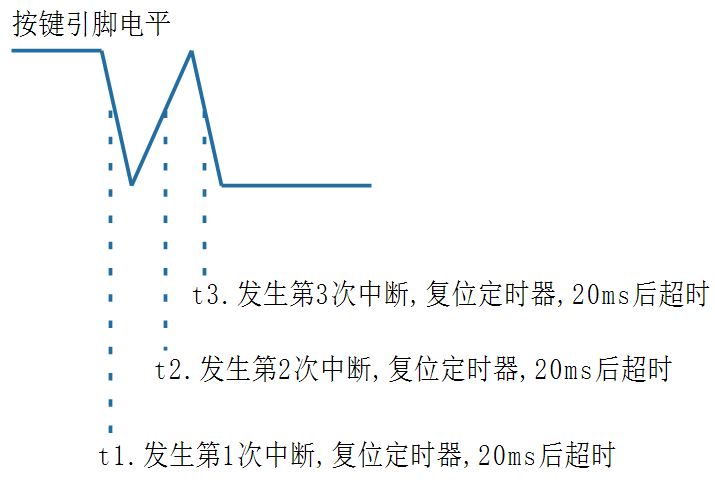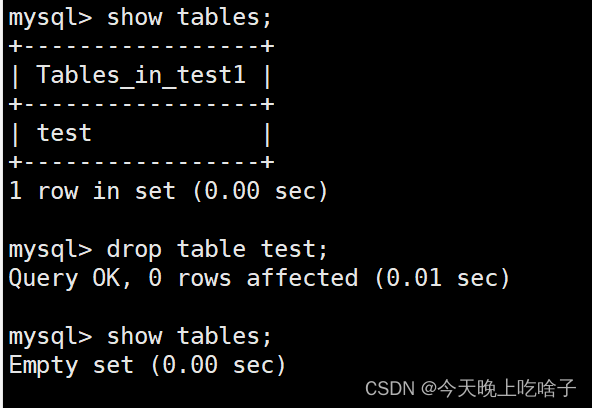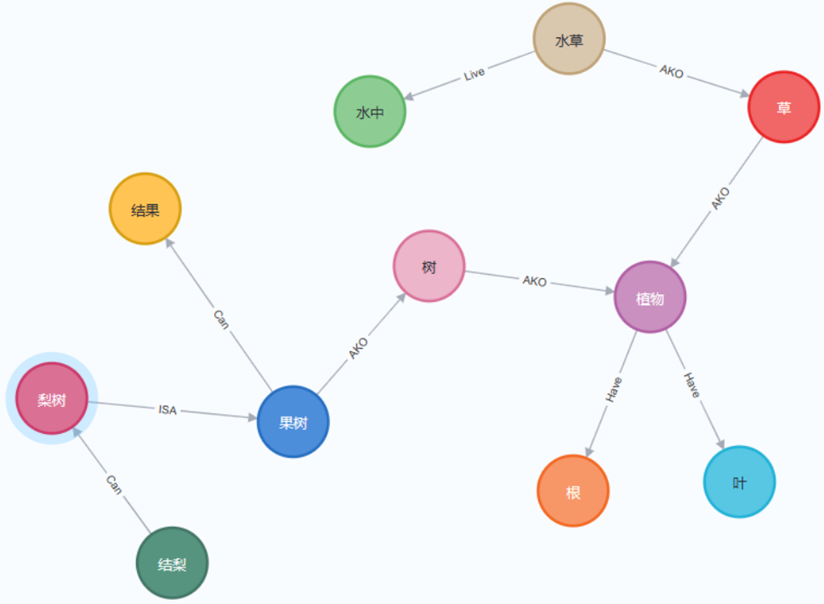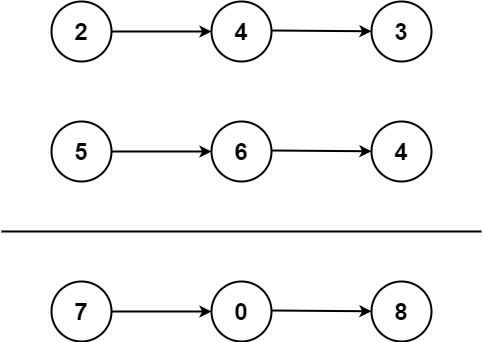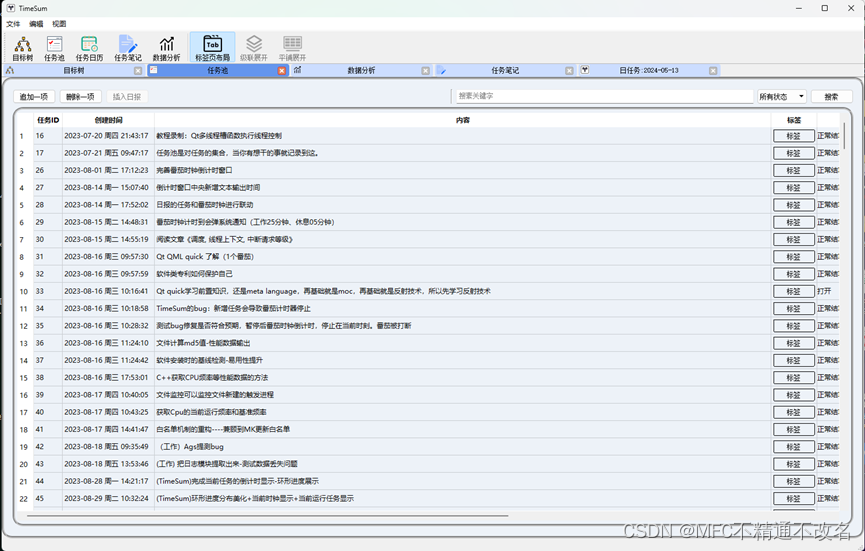论文链接:https://openaccess.thecvf.com/content/CVPR2022/papers/An_Killing_Two_Birds_With_One_Stone_Efficient_and_Robust_Training_CVPR_2022_paper.pdf
代码链接:insightface/recognition/arcface_torch at master · deepinsight/insightface · GitHub
背景
使用基于百万规模的数据集和基于margin的softmax损失函数来学习区分性的embeddings是当前人脸识别的SOTA方法。然而,全连接层的内存和计算成本随着训练集中ID数量的增加而线性增加。此外,大规模训练数据存在类间冲突(同一个人被分成不同ID)和长尾分布的问题。
传统FC
将传统的FC层应用在大规模的数据集上时,存在以下缺陷:
1、gradient confusion under interclass conflict
WebFace42M里有很多不同类别对之间的余弦相似度大于0.4,这表明类间冲突仍然存在于这些清洗过的数据集中。直接优化的话会导致gradient confusion(同一个人的特征非常相似却要掰成两个ID)
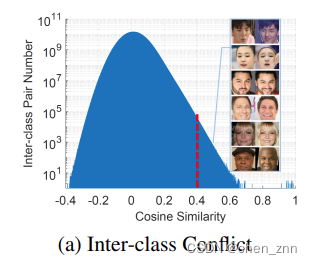
2、centers of tail classes undergo too many passive updates
每个iteration都优化图片数量很少的id,可能会导致负优化

3、the storage and calculation of the FC layer can easily exceed current GPU capabilities
PartialFC
在训练期间仍然维护所有类别中心,但只随机采样一小部分负类别中心来计算基于margin的softmax损失,而不是在每次迭代中使用所有负类别中心。更具体地说,首先从每个GPU收集embeddings和标签,然后将组合的特征和标签分布到所有GPU。为了平衡每个GPU的内存使用和计算成本,为每个GPU设置了一个内存缓冲区(下面代码中的perm)。内存缓冲区的大小由类别总数和负类别中心的采样率决定。在每个GPU上,首先通过标签选择正类中心并放入缓冲区,然后随机选择一小部分负类中心(负类中心的数量为self.sample_rate * self.num_local)填充缓冲区的其余部分,
def sample(self, labels, index_positive):
"""
This functions will change the value of labels
Parameters:
-----------
labels: torch.Tensor
pass
index_positive: torch.Tensor
pass
optimizer: torch.optim.Optimizer
pass
"""
with torch.no_grad():
positive = torch.unique(labels[index_positive], sorted=True).cuda()
if self.num_sample - positive.size(0) >= 0:
perm = torch.rand(size=[self.num_local]).cuda()
perm[positive] = 2.0
index = torch.topk(perm, k=self.num_sample)[1].cuda()
index = index.sort()[0].cuda()
else:
index = positive
self.weight_index = index
labels[index_positive] = torch.searchsorted(index, labels[index_positive])
return self.weight[self.weight_index]随后,使用选出的样本中心去与特征相乘并计算基于margin的softmax损失。
PFC在DDP框架下的流程图如下图所示,
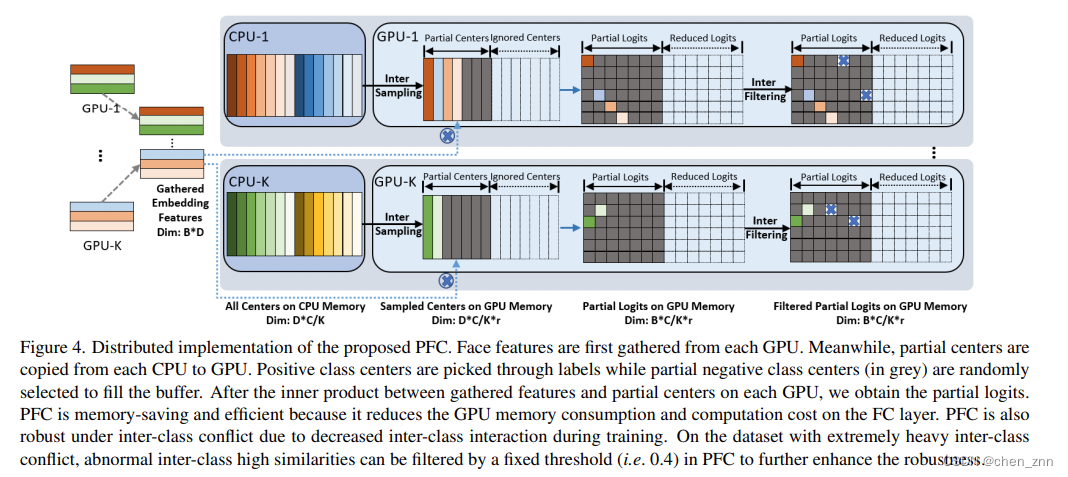
整体代码如下,
class PartialFC_V2(torch.nn.Module):
"""
https://arxiv.org/abs/2203.15565
A distributed sparsely updating variant of the FC layer, named Partial FC (PFC).
When sample rate less than 1, in each iteration, positive class centers and a random subset of
negative class centers are selected to compute the margin-based softmax loss, all class
centers are still maintained throughout the whole training process, but only a subset is
selected and updated in each iteration.
.. note::
When sample rate equal to 1, Partial FC is equal to model parallelism(default sample rate is 1).
Example:
--------
>>> module_pfc = PartialFC(embedding_size=512, num_classes=8000000, sample_rate=0.2)
>>> for img, labels in data_loader:
>>> embeddings = net(img)
>>> loss = module_pfc(embeddings, labels)
>>> loss.backward()
>>> optimizer.step()
"""
_version = 2
def __init__(
self,
margin_loss: Callable,
embedding_size: int,
num_classes: int,
sample_rate: float = 1.0,
fp16: bool = False,
):
"""
Paramenters:
-----------
embedding_size: int
The dimension of embedding, required
num_classes: int
Total number of classes, required
sample_rate: float
The rate of negative centers participating in the calculation, default is 1.0.
"""
super(PartialFC_V2, self).__init__()
assert (
distributed.is_initialized()
), "must initialize distributed before create this"
self.rank = distributed.get_rank()
self.world_size = distributed.get_world_size()
self.dist_cross_entropy = DistCrossEntropy()
self.embedding_size = embedding_size
self.sample_rate: float = sample_rate
self.fp16 = fp16
self.num_local: int = num_classes // self.world_size + int(
self.rank < num_classes % self.world_size
)
self.class_start: int = num_classes // self.world_size * self.rank + min(
self.rank, num_classes % self.world_size
)
self.num_sample: int = int(self.sample_rate * self.num_local)
self.last_batch_size: int = 0
self.is_updated: bool = True
self.init_weight_update: bool = True
self.weight = torch.nn.Parameter(torch.normal(0, 0.01, (self.num_local, embedding_size)))
# margin_loss
if isinstance(margin_loss, Callable):
self.margin_softmax = margin_loss
else:
raise
def sample(self, labels, index_positive):
"""
This functions will change the value of labels
Parameters:
-----------
labels: torch.Tensor
pass
index_positive: torch.Tensor
pass
optimizer: torch.optim.Optimizer
pass
"""
with torch.no_grad():
positive = torch.unique(labels[index_positive], sorted=True).cuda()
if self.num_sample - positive.size(0) >= 0:
perm = torch.rand(size=[self.num_local]).cuda()
perm[positive] = 2.0
index = torch.topk(perm, k=self.num_sample)[1].cuda()
index = index.sort()[0].cuda()
else:
index = positive
self.weight_index = index
labels[index_positive] = torch.searchsorted(index, labels[index_positive])
return self.weight[self.weight_index]
def forward(
self,
local_embeddings: torch.Tensor,
local_labels: torch.Tensor,
):
"""
Parameters:
----------
local_embeddings: torch.Tensor
feature embeddings on each GPU(Rank).
local_labels: torch.Tensor
labels on each GPU(Rank).
Returns:
-------
loss: torch.Tensor
pass
"""
local_labels.squeeze_()
local_labels = local_labels.long()
batch_size = local_embeddings.size(0)
if self.last_batch_size == 0:
self.last_batch_size = batch_size
assert self.last_batch_size == batch_size, (
f"last batch size do not equal current batch size: {self.last_batch_size} vs {batch_size}")
_gather_embeddings = [
torch.zeros((batch_size, self.embedding_size)).cuda()
for _ in range(self.world_size)
]
_gather_labels = [
torch.zeros(batch_size).long().cuda() for _ in range(self.world_size)
]
_list_embeddings = AllGather(local_embeddings, *_gather_embeddings)
distributed.all_gather(_gather_labels, local_labels)
embeddings = torch.cat(_list_embeddings)
labels = torch.cat(_gather_labels)
## 选出落在本进程对应的类别范围内的数据
labels = labels.view(-1, 1)
index_positive = (self.class_start <= labels) & (
labels < self.class_start + self.num_local
)
## 标签不在本类别段的, 将其类别标签设为-1
labels[~index_positive] = -1
## 将类别ID平移到原点(因为不同进程都会初始化对应的self.weight, 若不平移回去, 则label与self.weight中的index会对应不上)
labels[index_positive] -= self.class_start
if self.sample_rate < 1:
weight = self.sample(labels, index_positive)
else:
weight = self.weight
with torch.cuda.amp.autocast(self.fp16):
norm_embeddings = normalize(embeddings)
norm_weight_activated = normalize(weight)
logits = linear(norm_embeddings, norm_weight_activated)
if self.fp16:
logits = logits.float()
logits = logits.clamp(-1, 1)
logits = self.margin_softmax(logits, labels)
loss = self.dist_cross_entropy(logits, labels)
return loss实验结果
将PFC替换掉传统FC后,模型在WebFace(包括4m、12m、42m)上的性能会有所提升,
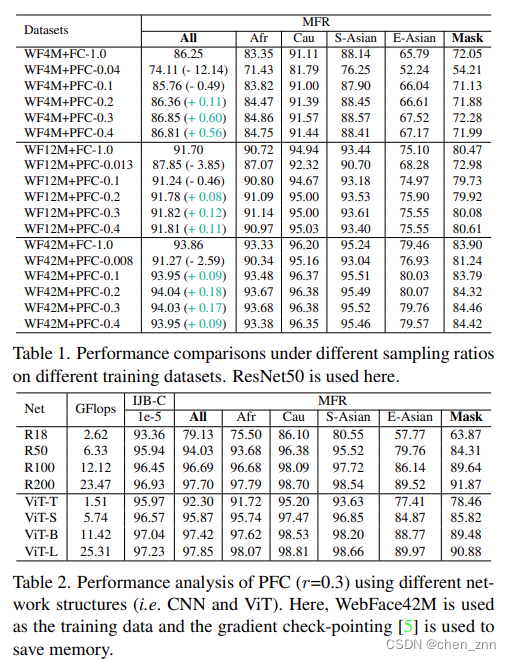

消融实验的结果如下,
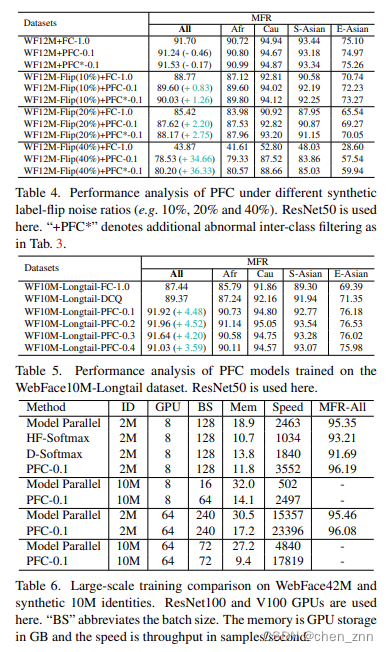
与SOTA方法的性能对比如下,

结论与讨论
结论
作者提出了一种用于在大规模数据集上训练人脸识别模型的方法——Partial FC (PFC)。在PFC的每次迭代中,仅选择一小部分类别中心来计算基于边际的softmax损失,这样可以显著减少类间冲突的概率、尾类中心的被动更新频率以及计算需求。通过广泛的实验,作者验证了所提出的PFC的有效性、鲁棒性和高效性。
局限性
尽管在WebFace上训练的PFC模型在高质量测试集上取得了不错的结果,但在人脸分辨率较低或低光照条件下拍摄的人脸上,PFC模型的表现可能较差。


